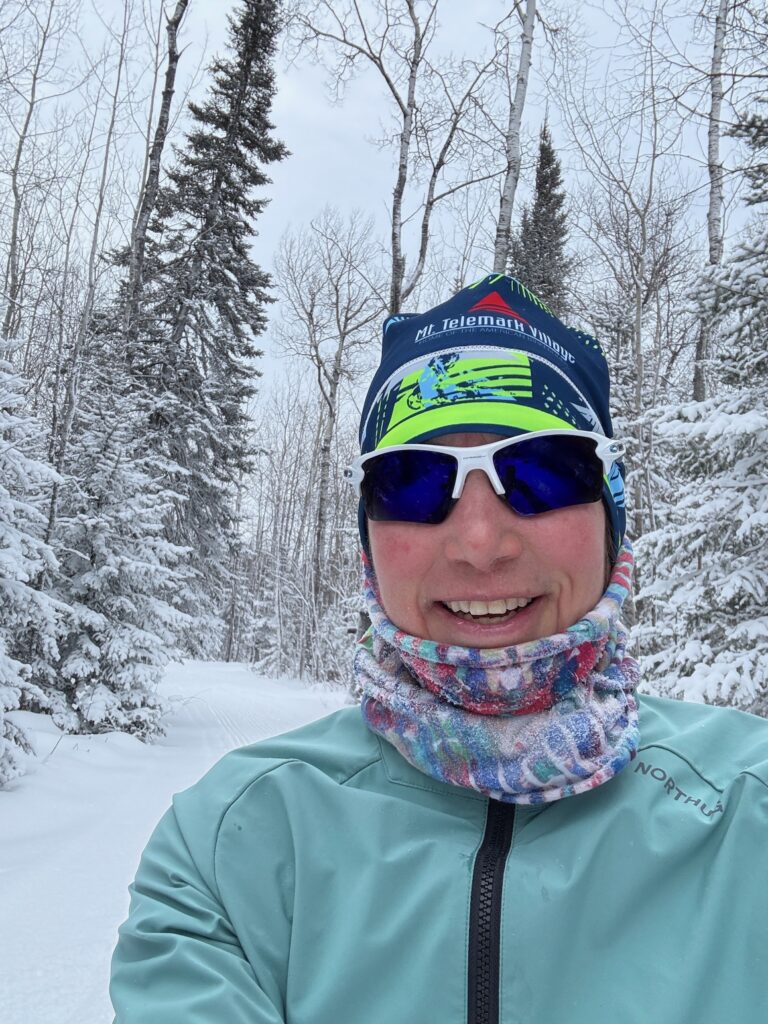By Kim Rudd
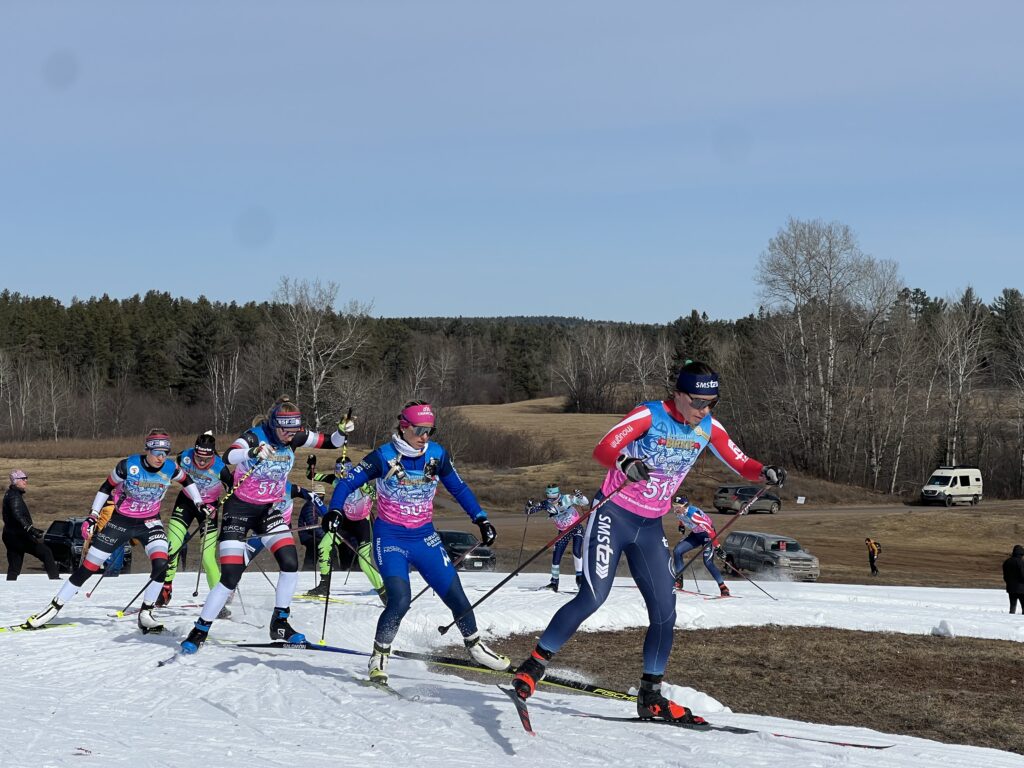
I write this Birkie blog post from my cabin in Hayward just a few days before the race! The Birkie fever is setting in with hot excitement. This year will be my 27th American Birkie race. A huge highlight is having both of my daughters here this weekend from Montana to race the Birkie. This will get my youngest daughter Leah’s first full Birkie starting in wave 6.
I remember my first Birkie in 1993, one of my favorite races. Before doing the race, I had never skied on the Birkie Trail. I skied from the third wave and remember looking up to the first massive climb with hundreds of skiers in front of me. Seeing everything with fresh eyes created excitement and energy to push myself up each hill. I took in the drummers, snowmobile fans on the famous wipeout corner, and the enormous double OO crowds cheering me on to the finish.
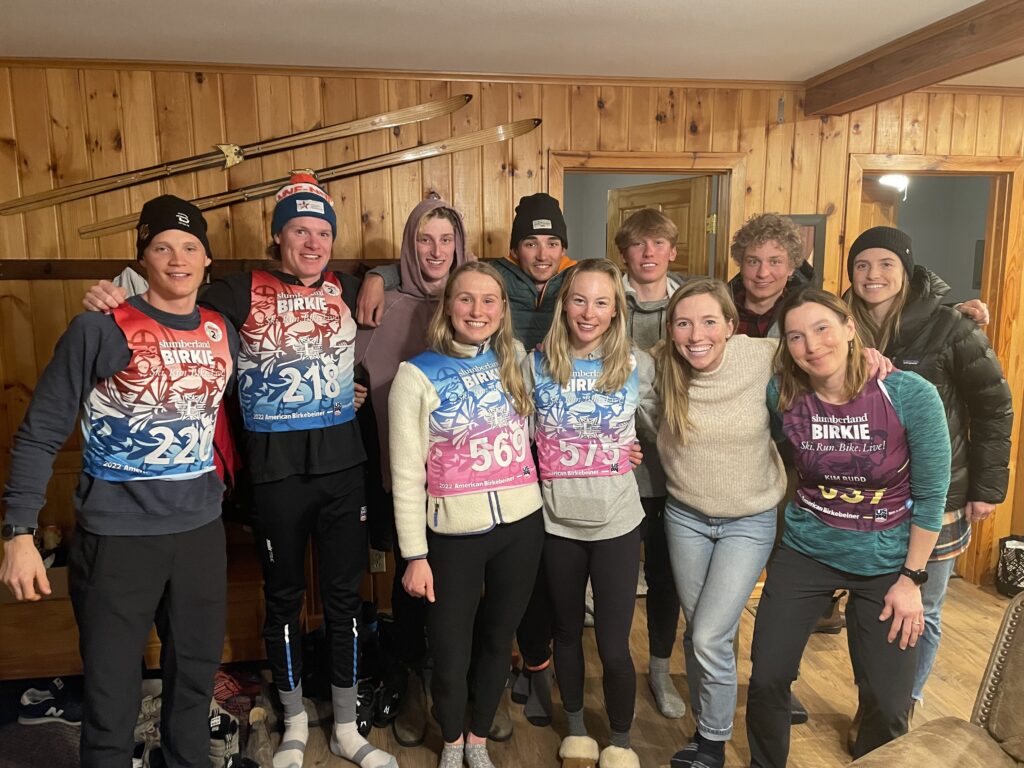
“Bitch Hill” was just as difficult as I had imagined, and the 3 km lake finish seemed like an eternity. Finally exiting Lake Hayward onto the main street, I took in the scene of cheering fans. No matter how slow or fast I was going, I felt like a superhero as I crossed the finish line.
One of my most memorable Birkie races was the year I broke my pole with about 6 km to the finish. At this point, there were no extra ski poles, so I had to make do with one pole on the long lake. I was skiing along Lake Hayward when I heard a friendly voice calling my name from behind. It was Jon Delany, who I had coached at Armstrong High School. He was in the elite men’s race and had caught up to me.
Jon also broke his right pole and encouraged me to draft him into the finish line. He could have gone much faster, but he was kind enough to bring me across the lake, and as we entered the main street, we finished hand-in-hand as we crossed the finish line. The crowds went crazy, cheering us on even more!
I have had some excellent Birkie races where I felt on top of the world. I have also had some pretty miserable races where I could barely move my cramping legs along the course. It took me several years to dial in how to pace, hydrate, and take feeds while trying to stay with my train of skiers. Each race, I learn new skills that help me prepare for next year’s Birkie. Below are some helpful tips that I have learned over the last 26 Birkie races.
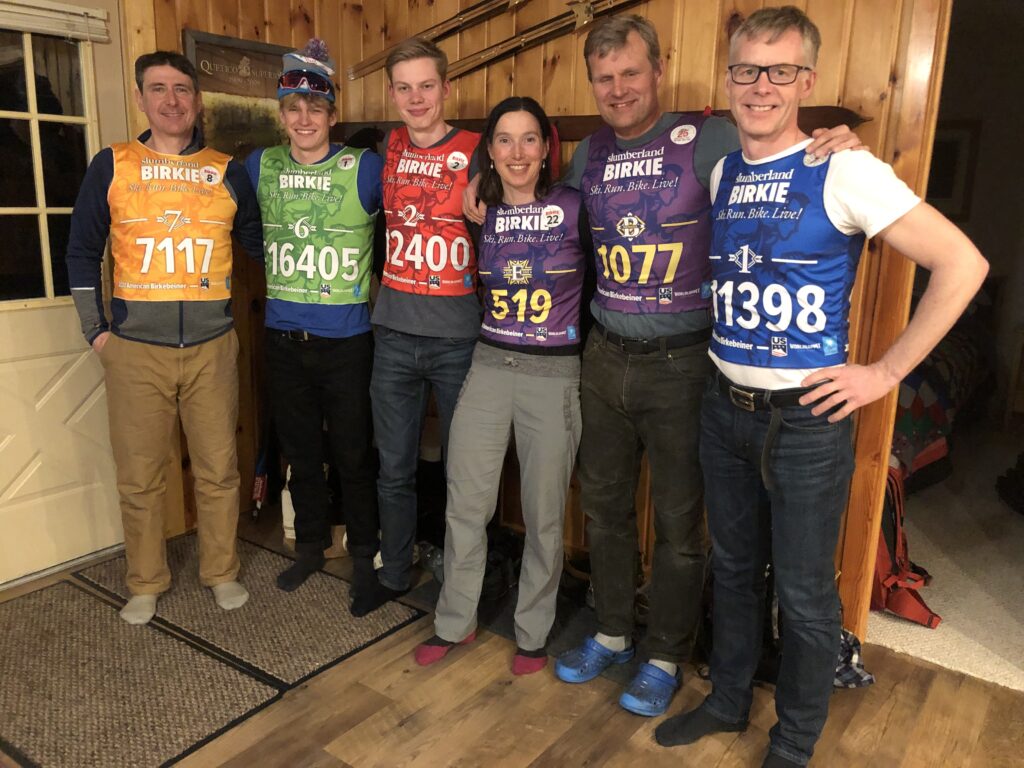
Prerace Tips
- Good sleep and plenty of rest the week before the race event.
- Hydrate well throughout the week leading up to your Birkie race.
- Pre-race workouts are key to performing well.
- On the Wednesday before the Birkie, I do my tune-up intervals ( 2 x 5 min., Level 3 marathon pace, and 2-3 x 3 min., level 4 race pace with warm-up and cooldown).
- The day before the race, I like to do an easy warm-up ski workout that lasts 45 minutes and includes a mix of short L3 and L4 intervals.
- Race preparations:
- Ski preparation is just as necessary as preparing your body. I start by cleaning the bases of my skis and hardening them with cold wax. I choose the type of ski with the correct grind for the temperature of the snow (not always the same as the temperature of the air). I always err on waxing colder, especially if new snow and colder temperatures are leading up to the race.
- Preparing my gels and liquids the night before the race is crucial. I like to wear a hip belt to keep my gels easily accessible during the race.
- Pre-race goals and mental preparation help to set the tone for the race. I often take racing too seriously, so remembering why I ski race helps me keep a calm mind. I desire to perform my best with a good attitude and for the right reasons. I need to remember that my worth does not = my race result. Having technique and race goals can help me throughout the race. Such goals include a positive attitude, quick feet, light hands, power into the downhill, relaxation on the glide, and draft baby draft! Having a grateful heart for the ability to ski in the woods with other like-minded crazies keeps me in good spirits.
Day of Race Tips
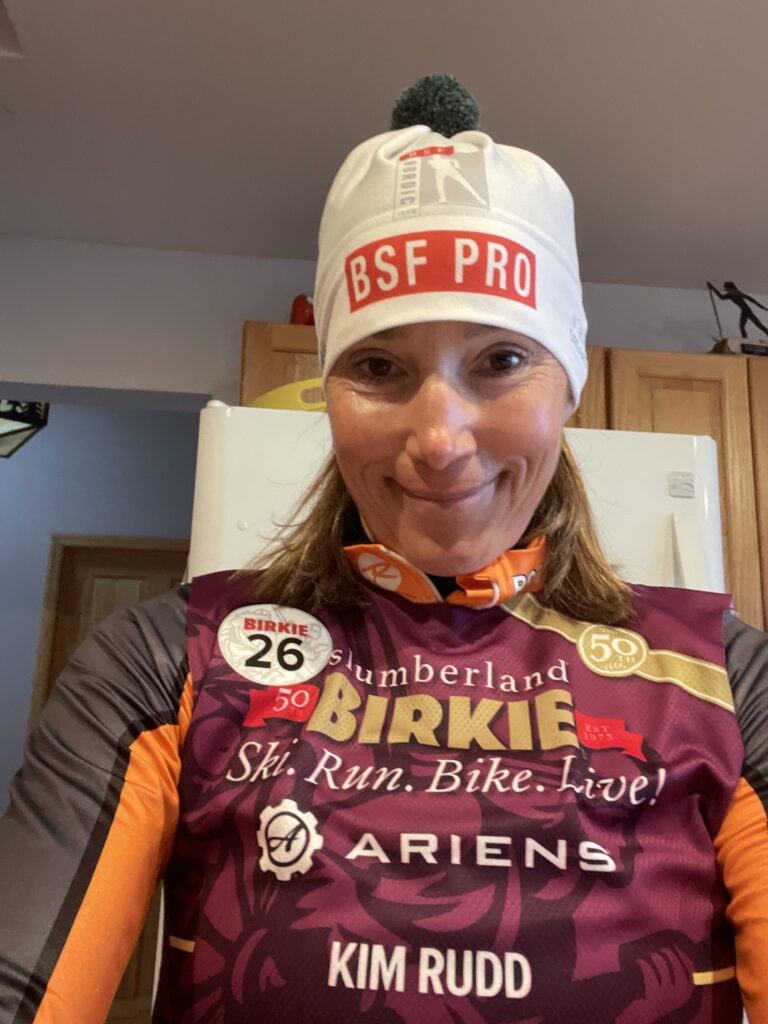
- Eat your oatmeal! Make sure to eat a full breakfast of carbs and protein at least 2-3 hours before your race starts. I prefer oatmeal with nuts, berries, bananas, and yogurt for my pre-race meal.
- Race warmup includes:
- Early morning 10-15 minute wakeup jog/walk to get my body firing on all cylinders.
- About 45 minutes before the race starts, I include a 20-minute pre-race warm-up ski, including some quick 20-second to 1-minute speeds to help prepare my body for the fast mass start. I leave time to go to the bathroom and take off my warmups.
- Prerace feed: I pack an extra gel, banana, and a full water bottle filled with electro-light to consume about 30 minutes before the race starts.
- Line up with confidence! You are what you think, so you are! Try to line up as far as possible in front of your wave. Believe in yourself, and don’t worry about who is behind you.
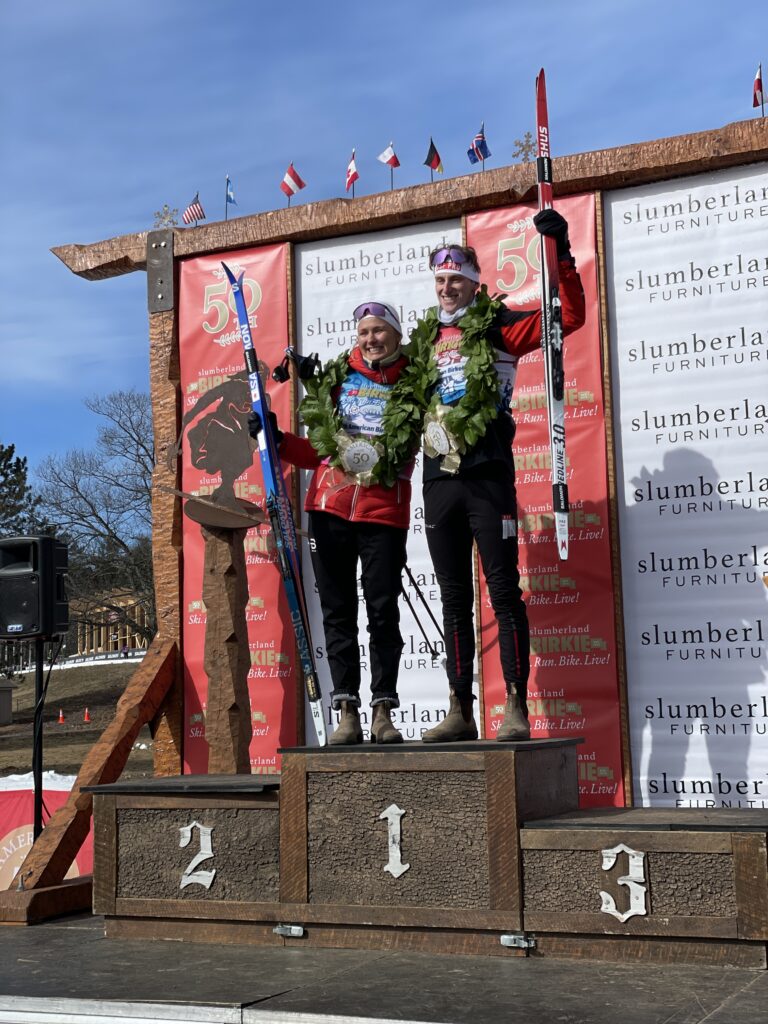
- Start strong! For the first 3-5 minutes, I like to go out pretty hard and then settle into my level 3 marathon pace. I want to find a pack of women skiers who I can trade off leading and drafting, which helps tremendously with overall race fatigue.
- Enjoy the scenery and have fun. The most critical piece of advice I can give is to have fun! Make sure to look around, take in the surroundings, and be grateful to be able to participate in such a marvelous event.
- Chill into a level 3 marathon pace. Resist the temptation to hammer the first half of the race. If I feel good, I like to ski more conservatively for the first half and then increase my speed in the second half.
- Draft the pack. If you can draft other skiers, you can conserve up to 15 percent of your energy output. Try to get in a nice draft pack before entering Lake Hayward, where there is often a headwind.
- Feed often. Earlier in the race, I consume one gel every 20- 30 minutes. Later in the race, consuming a gel with caffeine can help immensely with energy for the last 5-10 km.
- Hydrate often at feed stations or carry a water bottle if it is not too cold. Try to drink at least two cups of the electrolyte drink from the aid stations. This can often be difficult while trying to keep up with your pack of skiers, but it is essential later in the race.
- Focus on technique ques. I often think of several different techniques throughout the race. Quick feet, light hands-on steep climbs, hard V2 push extension into the downhill, and big push/long glide on the flats,
- I utilize the downhill. I pass multiple women on the downhills by tucking low and using the fast Jessie Diggins legs-only tuck-free skate.
- Impress spectators with a v1 hop skating up the Birkie Bridge! This will get you some good cheers and a beer from one of the many spectators who offer you a drink down Main Street!
- Finish strong. No matter how tired your legs and arms are, try to quicken your tempo and finish with a strong V2 down Main Street.
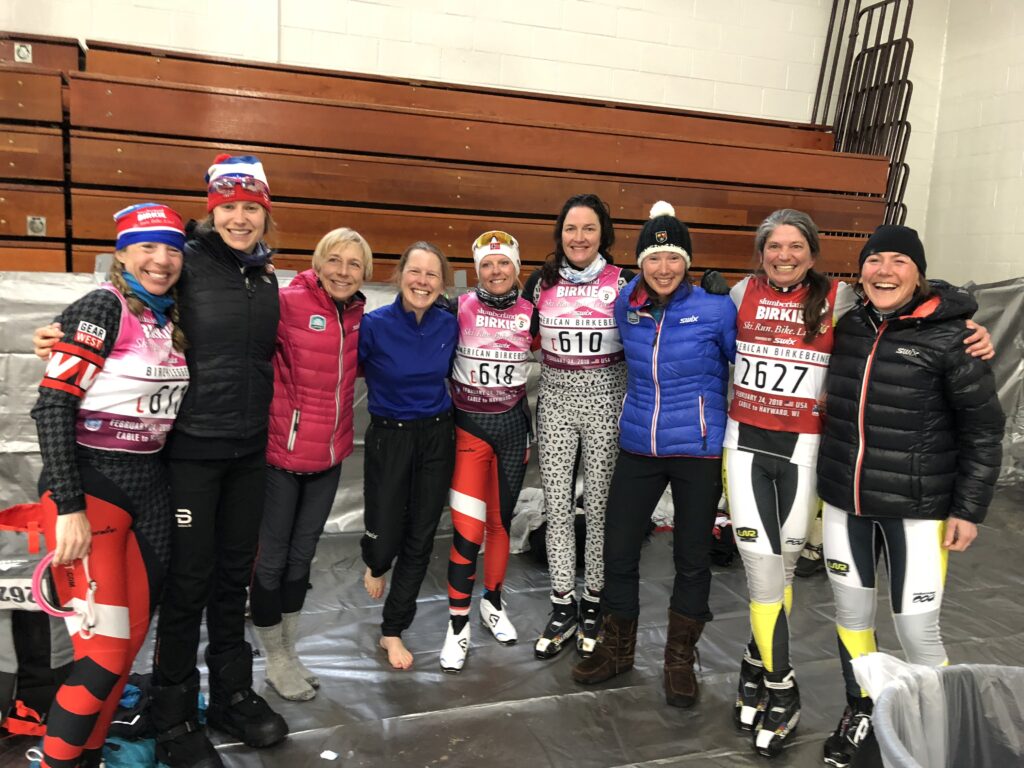
Post Race Tips
- Replenish with food and beverages within 20 minutes of your finish. This is key for all races and interval workouts. Even if your stomach does not feel like eating or drinking, you must refuel immediately!
- Change your clothes as soon as possible. After you finish, don’t stand and talk to everyone. Quickly find your ski bag and change into warm, dry clothing.
- Celebrate with friends! Take time to visit with old and new friends at the Birkie feed tent. This is my favorite part of the entire race. Reuniting with past youth and adults that I have coached over the years is always a highlight.
- A Post-race recovery walk is necessary to help your body recover more quickly. I also like to use my foam roller and lacrosse balls to get to those painful spots.
I hope these tips will be helpful for this years 2025 Birkie race! Best of luck to you as you make your way from Cable to Hayward on skinny skis!
Kim Rudd
